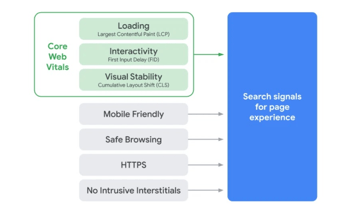If you haven’t already immersed yourself in the recent Facebook debacle, read through any tech news feed and you will quickly discover the intense scrutiny Facebook has been under over data privacy, fake news, political advertising and all things alike — with good reason, of course.
The social media giant has responded with some important changes that will hopefully make the platform a better place for sharing content. You may have come across this video from Facebook’s major ad campaign that will appear online, in movie theaters, public transit, billboards, and TV through the summer. Facebook reassures users that it will do better job of protecting user privacy — a bid to win back consumer trust.
As promised, these changes come with some new rules that advertisers have to abide by. Here’s what changes should be on your radar, along with some other rules you may not have known about until now.
Eliminating Clickbait
Facebook categorizes clickbait and spam as posts that are designed to grab your attention and get you to click on links or interact with the post in a specific way. These type of posts will automatically be placed lower in the News Feed. (We all want our posts to get lots of clicks - you can read here the difference between a catchy headline and clickbait.)
This includes headlines that mislead people or intentionally leave out important details or exaggerate information. It’s easy to agree with Facebook on this one. A great way to circumvent this update is to focus on quality content and simply be clear and transparent in your headlines.
Personal Attributes
You can no longer single out people by their personal attributes. What exactly does this mean? Well, for example, I discovered the change when boosting a post along the lines of “Does your child struggle with low self-esteem? We offer a nurturing environment...” and Facebook responded with: “Your ad can't contain profanity, harassment, or references to your audience's personal characteristics (such as gender, race, age or name).”
I was surprised to see that this messaging counted towards Facebook’s long list of prohibited content, but I can also see why. Here are a few other examples on how people use personal attributes to make potentially hazardous assertions or implications about a person. More explanation below.
- Okay: Ad creative that describes or shows the promoted product or service
- Not Okay: Text referencing or or alluding to personal attributes or characteristics of the targeted group or individual
- Not Okay: Using the word "other" to reference a personal characteristic
Political Ads
Perhaps the most impactful change is Facebook’s new policy on political advertising. (Finally!) Any advertiser that wants to run political ads must now go through Facebook’s authorization process that requires them to reveal their identity and location, and advertisers will only have a week’s grace period starting today before those unauthorized will have their ads paused.
This update also includes a “paid for by” labels on political and issue ads on Facebook and Instagram in the U.S. and its publicly searchable archive of all these politics-related ads that run in the U.S. The labeling won’t just apply to candidate and election ads, but those dealing with political issues such as “abortion, guns, immigration or foreign policy.”
False News
While this probably (hopefully) does not apply apply to you as an advertiser, it is still an important change to note. In an effort to reduce the spread of false news on Facebook, the platform is trying to “disrupt economic incentives for people and Pages that share misinformation.” This includes working with independent third-party fact-checkers, stories rated as false by those fact-checkers are shown lower in News Feed.
If Pages or domains repeatedly create or share misinformation, Facebook significantly reduces their distribution and remove their advertising rights.
I think we can all agree that these changes in Facebook ad policies are a good thing and will help us as advertisers in the long run. Just remember to review Facebook’s ad guidelines before going to the drawing board with your next creative campaign. And if you’re ever in need on an expert on social media, we’re here to help. Just ask On-Target!.



Leave A Comment